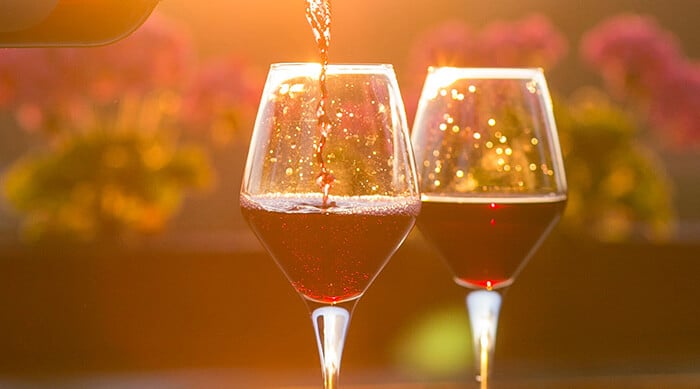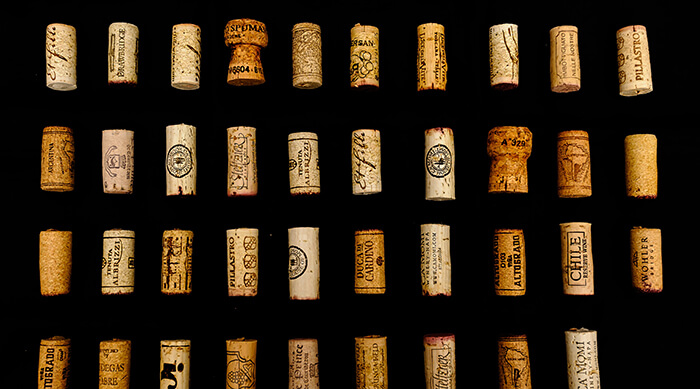If you’re a wine enthusiast, you likely know quite a bit about your favorite wines. You may even be able to say why you like a California chardonnay over any other white wine or why easy-drinking red wines like pinot noir are more your speed.
Beyond that, it can get more challenging. That’s where wine tasting notes come in.
How do you get tasting notes for wine? To get tasting notes for wine, pay attention to 3 key areas as you sip: the appearance, the aroma, and the taste. From there, you decide what you think about that wine and how it compares to others like it.
How to Write Wine Tasting Notes
If you’re on your way to your first wine tasting, taking notes about what you’re seeing, smelling, and tasting is a great way to remember what you liked and what you didn’t. Think of it like a wine tasting review, or a detailed roundup of your impressions during your tasting.
Wine tasting notes are also a way for wine lovers to understand their palates better, begin to notice similarities and differences in wine, and speak more eloquently about wine. They can better inform your wine pairings, too.
What do notes mean in wine tasting? Notes in wine tasting can mean aromas and flavors, often detailed using common wine tasting descriptors. Together, they make up the wine’s profile and define what makes each varietal unique.
Understanding each step of a more immersive wine tasting makes the process much less intimidating.
In brief, though, it’s about the 5 S’s of wine tasting: see, swirl, sniff, sip, and savor.
Appearance
The appearance of the wine in front of you is the first thing you should notice. If you’re tasting a variety of red wines, you should still notice differences in hue. A cabernet sauvignon, for example, is quite opaque. Merlots are a little lighter.
You should also note differences in vintage. An older, aged Burgundy wine should look darker than a younger bottle. Darker red wines also have a higher concentration of resveratrol.
There are differences in the color of white wines, too, even within the same varietal. A lighter chardonnay should taste more like a crisp white wine. A more saturated, golden-colored chardonnay can give off those buttery notes. Sweet wines typically fall somewhere in the middle.
You can also note what you see about the wine’s viscosity here. Tilt your wine so that it runs down the sides of the glass. Thicker, more syrupy wines have a high viscosity. Full-bodied wines are typically more viscous.
The drips on the side of your glass, also known as the wine’s legs or tears, don’t have much to do with the quality of the wine you’re drinking.
They’re more an indicator of the wine’s alcohol by volume (ABV). The higher the alcohol content, the more “legs” you’ll see. These wines are often higher in calories, too.
Smell
The smell of the wine, or wine aromas, affect the taste of the wine. Wines within the same varietal from grapes grown in one region can have different aromas than those same grapes grown elsewhere. Aging and fermentation processes can also affect what you smell.
Give your wine a good swirl and take a whiff. Wine drinkers well-versed in sniffing out aromas will tell you to stick your nose right in the glass.
From there, note the variety of aromas coming off the top of the wine glass. There are 3 different kinds to look for, although not all wines will feature all 3 aromas:
- Primary aromas: Most of a wine’s aromas fall in this cluster. These are the aromas connected to the grape variety used in that wine. It’s the fruity, floral, and even spicy notes of the wine’s flavor you may get after that first sniff.
- Secondary aromas: These aromas come from the winemaker’s processes. Oak aging (from oak barrels) and malolactic fermentation, a secondary fermentation that can reduce acidity in wine, are two examples that can affect a wine’s secondary aroma.
- Tertiary aromas: Wine left to age in the bottle can take on tertiary aromas. It’s how wine evolves if left to its own devices. Wines that aren’t meant to age can take on aromas you don’t want, too.
If you notice something off about the wine, mention it to the sommelier. Trust your nose. It could mean pieces of the cork have fallen into the bottle, the wine hasn’t been stored properly, or it’s just gone bad.
Taste
It’s finally time to taste the wine. The taste of the wine is also the structure of the wine. It’s the wine’s body and how it feels on the tongue, or the mouthfeel. The taste of the wine can also change on that second sip and vary from person to person.
What are the 3 types of wine tasters? The 3 types of tasters are super-tasters, average tasters, and non-tasters. Most tasters out there are “average”: Their taste buds pick up nuance, but it’s bold flavors that come out in an obvious way.
Supertasters are more sensitive to certain flavors, while non-tasters are much less sensitive to even extreme flavors like spice, bitterness, or acidity.
No matter where your taste buds fall, note the following when it comes to the wine’s taste:
- Texture: Note the level of dryness and astringency on your tongue. These are tannins. The most tannic wines are Bordeaux varietals like cabernet sauvignon and merlot.
- Sweetness: Sweet wines like riesling and French sauternes aren’t the only wines with residual sugars. Many white wines will have some natural sweetness left behind as part of the fermentation process.
- Acidity: Note how sour the wine tastes. Sauvignon blanc and some sparkling wines are known for their citrus notes. A wine that’s obviously too sour may have gone bad, though. Talk to your sommelier if you think your wine has gone funky.
- Alcohol: A wine with a higher ABV will taste like it. Consider whether what you’re drinking is too alcoholic. Drinking wine should be a pleasurable experience for you, not a painful one, especially if you have a lower tolerance for alcohol.
Conclusion
Your conclusion is where you tie everything together. You’ve experienced the wine across the senses, and now it’s time to decide whether that wine was a hit or a miss.
Consider these questions when you’re wrapping things up:
- Did the wine taste different on that second sip? If so, how?
- How would you describe the wine’s finish? Did it stay on your palate or disappear immediately?
- Was there a feature of the wine that overpowered its taste?
- Did you like the wine? If not, why?
- Was there something memorable about that wine, for better or worse?
If you’re just taking wine tasting notes for personal use, you may want to develop a ranking system for yourself to make it easier to identify what you like in wine.
What to Avoid
For a memorable, helpful wine tasting, avoid these don’ts when putting together your wine tasting notes:
- Don’t forget to cleanse your palate. Every wine tasting will have water available for you between tastings. Some will even have crackers to get your palate back to a neutral place. If you’re here to take notes, don’t snack on much else in between sips.
- Don’t just take one sip. Your first sip of wine is an introduction to that wine. Your second is really where you can focus on the taste. Note the appearance and aromas after your first sip, but give your taste buds a chance to warm up with a second.
- Don’t assume you know everything. Your sommelier is your guide through each wine tasting. Take their advice on how to taste and what to look out for with each grape variety.
- Don’t arrive at a tasting closed-minded. There is so much variety among wine styles that you should avoid proclamations about hating all types of one wine. For example, you may not be a fan of most syrahs, but there may be one out there for you that you love.
How to Read Wine Tasting Notes
Once you know how to write wine tasting notes, it’s much easier to read and decipher another wine lover’s descriptions.
Consider the same areas you explored in your own notes, but understand that wine tasting can be very subjective.
And don’t go overboard to sound like you’re an expert. The more flowery your descriptors, the less helpful your notes can become.
Reading wine tasting notes also requires a little more understanding of the more popular wine terms out there.
8 Wine Terms You Need to Know
Impress your sommelier by using common wine terms effectively or just to show your interest in that tasting.
What do you say at a wine tasting? You don’t need to say anything at a wine tasting, but if you want to describe the wine before you, consider commenting on what you see, smell, and taste.
We’ve done a deep dive on how to work your way through a wine tasting successfully. But it doesn’t hurt to speak like the pros!
Here are the most important wine terms to know before attending a wine tasting:
- Balance: A balanced wine is a wine in which all elements blend together naturally.
- Body: A full-bodied wine has a high viscosity and feels full and weighty when you drink it.
- Bouquet: The wine’s aromas are part of its bouquet, particularly in an aged wine.
- Complexity: A complex wine has a lot going on, from flavor to aroma.
- Herbaceous: This flavor profile is green and herbal. Think bell pepper and grass.
- Minerality: This refers to earthy smells and tastes in wine. Think wet asphalt. (No, really!)
- Terroir: A wine’s terroir refers to its sense of place, including any unique regional notes.
- Vinification: This is the process of making wine.
At the end of the day, wine tasting should be fun!
We also believe it shouldn’t be limited to those who drink alcohol.
You can taste all that’s unique about wine without the alcohol with Surely’s non-alcoholic wine. It’s gluten-free, low-calorie, and comes in various wine styles to round out that tasting menu. Choose from our full-bodied pinot noir or our sauvignon blanc, crisp with floral notes.






